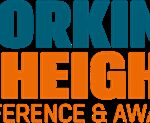Scissor Lift Safety Rules: Stay Safe While Working at Heights
Scissor lifts are essential tools on construction sites and in industrial environments. They help workers safely access high places, making tasks like maintenance and installation much easier. But, like all powerful machines, they come with certain risks. That’s why it’s vital to know the scissor lift safety rules to ensure a secure and accident-free working environment.
So, What Exactly is a Scissor Lift?
A scissor lift is a motorized platform with crisscrossing metal supports that help raise it vertically. They’re either powered by electricity or gas and are used in places where scaffolding would be too bulky or impractical. A scissor lift is technically considered a type of scaffolding by OSHA, not just an aerial work platform, but that doesn’t mean they aren’t safe when used properly.
Top Tips to Keep Safe on a Scissor Lift
1. Get Proper Training
You can’t operate a scissor lift without first undergoing some training. It’s not just recommended; it’s required by OSHA. Before getting started, make sure all operators are certified to avoid accidents and ensure compliance with workplace safety regulations.
2. Check the Equipment
Before hopping onto a scissor lift, always check the equipment. Ensure there are no broken parts, and verify that the surrounding area is free from hazards. A quick check at ground level can save you a lot of trouble.
3. Fall Protection is Key
Falls are one of the biggest risks when operating scissor lifts. To keep things safe:
- Ensure the lift has working guardrails to prevent falling.
- While not always required by OSHA if guardrails are present, some employers may still require safety harnesses.
- Never stand on the guardrails.
- Keep your work area close to you, and avoid leaning away from the lift.
4. Make Sure the Lift is Stable
A stable scissor lift is a safe scissor lift. Always follow the manufacturer’s instructions and avoid operating the lift near traffic or unstable ground. Here are a few more tips:
- Set up the lift on flat, solid ground, away from any potential hazards like slopes or debris.
- Avoid using the lift in high winds or poor weather conditions.
- Stick to the lift’s weight and height limits—don’t push it!
5. Keep Your Distance from Power Lines
Crushing and electrocution risks are real, especially if you’re too close to power lines. To stay safe:
- Maintain a distance of at least 10 feet from power lines to avoid electrocution.
- Use traffic control measures to prevent workers from getting too close to the lift.
- Make sure your overhead clearance is free from wires and other fixed objects.
6. Proper Lift Maintenance
Keeping your scissor lift in top condition is a must. Regular maintenance ensures it works safely and effectively. This includes:
- Performing pre-inspections and routine checks.
- Ensuring safety features like guardrails and brakes are in good condition.
- Testing the emergency stop buttons and making sure they work properly.
7. Be Aware of Potential Risks
Scissor lifts come with their share of risks. Common safety hazards include:
- Poor Maintenance: If the lift isn’t well-maintained, it might malfunction.
- Improper Positioning: Always check the surroundings before operating.
- Lack of Training: Untrained operators are more prone to accidents.
Why Scissor Lift Certification is Crucial
Certification is a big deal when it comes to scissor lifts. OSHA requires all operators to undergo training, which includes learning how to operate the lift safely and how to spot hazards. By investing in training, you can create a safe work environment and ensure that everyone knows how to use scissor lifts the right way.
Final Thoughts
Using scissor lifts can make many tasks easier, but safety should always be your number one priority. By following these simple safety rules—getting proper training, inspecting the lift, using fall protection, and keeping the lift stable—you can minimize the risk of accidents and injuries. Stay compliant, stay safe, and always make safety a priority when working with scissor lifts.




